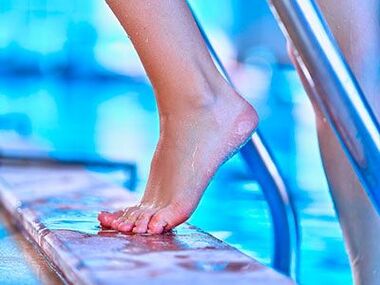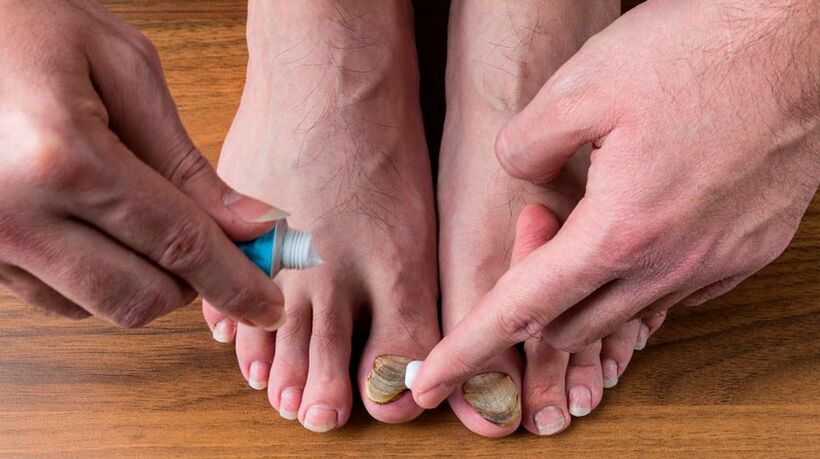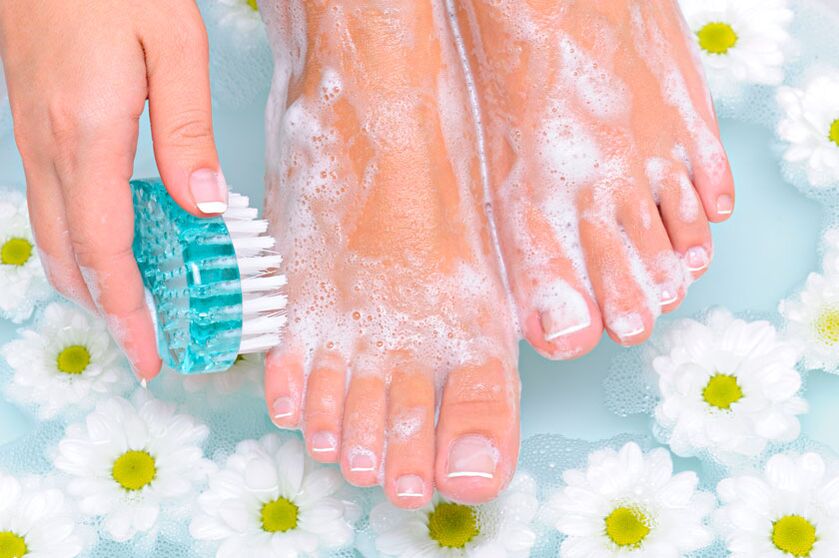
In summer, we often travel, visit public beaches, visit swimming pools and showers. Sometimes, we even need to travel long distances to the sea, where, anyway, we have to use public beaches or toilets. All of these are places where the accumulation of infections increases, where you can often get nail fungus. Its treatment is far from a simple process, but don't despair-you can still get rid of the fungus on your nails!
Nail fungus is a common disease, usually starting from a small spot under the tip of the nail. It is available in white and yellow. Contrary to popular belief, the fungus occurs on the legs and hands. If not detected in time, the fungal infection will begin to spread deeper. Over time, the fungus can cause the nail plate to become discolored, thickened, and broken. This can affect several adjacent nails, even if only one nail is infected initially.
When the condition is mild and does not bother you, you may not need serious treatment. If you have severe pain due to nail fungus, popular nursing techniques and various medications can help you. Pay attention to your feet, because nail fungus often recurs even if the treatment is successful. Another popular name for this fungus is onychomycosis (on-ih-koh-my-KOH-sis). A condition where fungus affects the area between the toes and the skin of the foot is called foot mycosis (tinea pedis).
Symptoms of fungal infection
Even if you have never encountered nail fungus and do not know what it looks like, then you will never miss this unbearable itch. Applying a certain method of preventing infection will not be superfluous, so the process will not enter the operational phase. Therefore, many people recommend using vinegar to disinfect areas that may be infected with fungi. The main symptoms of nail and foot fungus are:
- Itching at the infected site;
- Changed the color of the nail plate;
- Split and brittle nails;
- Pain in the feet.
Effective treatment should be started when the first symptoms of nail fungus appear; special creams and ointments with antifungal effects will help you. The essence of professional treatments to get rid of foot fungal infections is that they not only eliminate symptoms, but also destroy the source of infection.
Fungal infections can occur in people of any age, but are more common in the elderly. With age, nails become brittle and dry. The resulting cracks in the nail allow the fungus to penetrate into the interior. Other factors, such as reduced circulation in the legs and weakened immune system, also play an important role in increasing the likelihood of infection.
Fungal infections on the feet can start on the athlete's feet (foot fungus) and then spread from one toe to another. At the same time, it is less likely to infect someone's fungus, and you are more likely to pick it up in public places and places in contact with the environment.
Risk factors and complications
An unpleasant factor that can increase the risk of infection with fungi is type 1 and type 2 diabetes. Diabetes usually causes circulatory disorders in the legs and may cause numbness due to nerve damage. It significantly increases the risk of cellulite, dry feet, cracks and injuries. Due to the poor condition of the skin, blood vessels, and nerve fibers, any relatively minor foot injury, including nail fungal infections, can lead to more serious complications. If you have diabetes and suspect that you have fungus, see a doctor.
Factors that may increase the risk of nail fungus:
- Circulatory disturbance
- Sweat a lot
- The history of sports foot
- Damaged skin or nails
- Skin conditions (such as psoriasis)
- Any type of diabetes
- Weak immunity
Do not start treatment, because when it becomes severe, the fungus can be very painful and cause irreversible damage to the skin and nail plate. If you suspect that your body’s immune strength is low, please be especially careful, because the damage caused by fungi is difficult to correct. Therefore, it is very important to cure the fungus as soon as possible.
Main treatment

Unfortunately, problems such as fungal infections of nails and skin occur not only in adults, but also in children. Our grandmother used the oldest and believed to be the fastest way to get rid of infection-vinegar. For a bowl of water, you need a cup of 9% vinegar. This bath can kill fungal spores and prevent their spread. Keep in mind that this process can be very painful for irritated or damaged skin areas.
Contrary to popular belief, spores not only affect the skin of the legs, but also easily stay on the arms or other parts of the body. The sooner the most effective treatment is used to take care of the damaged part of the body, the sooner it can be cured. Fungal nail infections can be difficult to treat. If self-care strategies and over-the-counter products do not help, consult your doctor. Treatment depends on the severity of your condition and the type of fungus that causes it. It may take several months to see the results. Even if the condition of your nails improves, reinfection is not uncommon.
Antifungal drugs can be used topically and orally. They are usually the first choice because they clear the infection faster than topical medications. These funding actions are aimed at accelerating the growth of the nail plate and the faster detachment of the affected area. Usually, it takes 6-12 weeks for the fungus to disappear completely. When healthy nails grow back, the end result will be obvious. In addition, the older the patient, the worse the treatment effect. Adults over 65 may require longer recovery time and may require additional topical medications.
Oral antifungal drugs are not commonly used because they can cause various side effects. Therefore, if the disease is not in the advanced stage, then the doctor will try to do it with external causes. A blood test is recommended to determine the exact drug dose. Doctors may not recommend oral medications for people with liver disease, heart failure, or taking certain medications. After all, their common side effects are skin rash and liver damage.
Another way to eradicate the disease is anti-fungal nail polish. Apply it to the infected nail and surrounding skin once a day. After 7 days, you wipe the application layer with alcohol and then start a new application. You may need to use this nail polish daily for nearly a year.
Another treatment option is an antifungal cream, which must be applied to the infected nail after soaking. To improve the effect of the cream, it is best to thin your nails first. The thinner layer will help the drug penetrate and destroy the fungus. In this process, the stratum corneum is diluted with urea and then removed with a file or other tools.
The most effective folk remedy

Homemade vinegar ointment
The most effective way to remove fungus is vinegar and eggs. An excellent ointment was obtained from them, which promotes tissue healing and softening of the affected area of the nail. Put the raw eggs in a glass with vinegar, and then put them in a dark cabinet until the essence dissolves the eggshell. Then you need to remove the film and mix the vinegar, oil, and eggs together. Spread the ointment on the steamed leg and move the cellophane forward to produce a bathing effect. Then remove the affected softened area and apply the ointment again the next day.
Garlic lotion
Garlic is a powerful natural antibacterial and antifungal agent. It helps to remove fungal lesions in the gentlest way, even in advanced cases. The garlic juice is mixed with alcohol in a ratio of 1: 1 and diluted with distilled water. With this lotion, all affected areas of the skin and nails must be lubricated at night until the fungus is completely dead. Even in advanced cases, this emulsion is effective.
Mint compress
Peppermint is an excellent fungal medicine. The essential oils in peppermint have been shown to be effective against fungi, Langella and Staphylococcus. Traditional medicine believes that treating fungi with herbs is as effective as treating fungi with ointments. Fresh plant leaves or essential oils are best for making compresses. If it is made from fresh leaves, you need to grind mint with salt and apply it to your sore nails. If the fungus is in an uncomfortable place on the arm or leg, it is best to fix it with a bandage. Essential oils are suitable for lubricating damaged areas.
Copper sulfate ointment
Another popular method is to use copper sulfate to fight fungi and infections. It is part of many antifungal ointments, but can also be used as a standalone medicine. If you do not have the opportunity to buy ointment at the pharmacy, you can prepare it yourself. Use tar or goose fat to make a greasy base, add a teaspoon of sulfur and copper sulfate there. Copper sulfate must be calcined in a frying pan until it turns white or gray. It is necessary to apply this ointment to the sore parts of the legs or hands every night.
Iodine on toenail fungus
In an emergency, ordinary iodine, which is readily available at home, will help fight the fungus. It works well on wounds, but few people know that just a drop of iodine can prevent the development of fungal foot infections. This is the best way to treat the initial manifestations of nail fungus. Apply it directly on the nail plate at night, and then put on socks, the iodine will be absorbed by the nail in the morning. This procedure must be repeated for at least two weeks.
Prevent foot fungus
Remember that fungus can be prevented by folk remedies for the feet, so if you suspect fungus, use vinegar or iodine. The following habits can help prevent nail fungus or reinfection:
- Wash hands and feet often. Wash your hands after touching infected nails. Moisturize nails after washing.
- Cut your nails straight, smooth the edges with a file, and file off the thickened areas. Sterilize the nail clippers after each use.
- Wear sweat-absorbent socks or change them throughout the day.
- Choose shoes made of breathable materials.
- Throw away old shoes or treat them with disinfectant and anti-fungal powder.
- Wear shoes around the swimming pool, changing rooms and public areas.
- Choose a nail salon that uses sterile nail tools for each customer.
- Discard nail polish and artificial nails.















